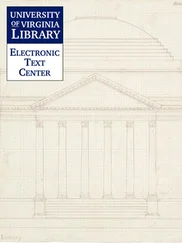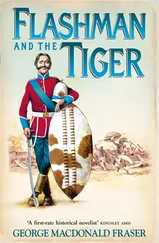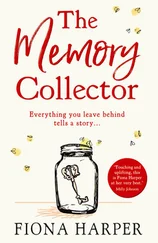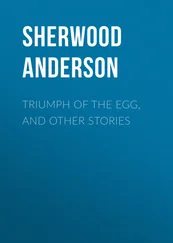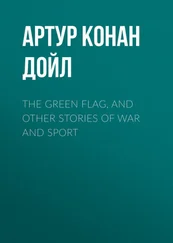I am also hoping that these chapters will ignite your curiosity to learn more about history—or at least the history of these extraordinary projects. So in addition to listing the sources I’ve directly referenced in this book, I have also included suggestions for further reading that might be of interest. This will not be all-encompassing. This isn’t a comprehensive bibliography. It’s just a taste of what is out there.
(I will almost certainly leave out your favorite book/article/document. The one you swear by. The only one that matters . And it’s totally the one Wikipedia used. I didn’t forget to include it. And it’s not like I don’t know it exists. I just left it out because I knew it would annoy you.)
I hope this gives you a little insight into what else is available for each of these amazing projects should you choose to keep digging.
Chapter 1: Acoustic Kitty
Robert Wallace and H. Keith Melton. Spycraft: The Secret History of the CIA’s Spytechs, from Communism to Al-Qaeda . New York: Dutton, 2008.
Victor Marchetti and John Marks. The CIA and the Cult of Intelligence . New York: Knopf, 1974.
Jeffrey Richelson. The Wizards of Langley: Inside the CIA’s Directorate of Science and Technology . New York: Basic Books, 2001.
Emily Anthes. Frankenstein’s Cat: Cuddling Up to Biotech’s Brave New Beasts . New York: Scientific American/Farrar, Straus & Giroux, 2013.
“Views on Trained Cats.” Redacted CIA memorandum. National Security Archive. https://nsarchive2.gwu.edu//NSAEBB/NSAEBB54/st27.pdf.
“Hair Cells and the Mechanoelectrical Transduction of Sound Waves.” In Neuroscience, 2nd ed., edited by Dale Purves et al. Sunderland, MA: Sinauer Associates, 2001. www.ncbi.nlm.nih.gov/books/NBK10867/.
Kat Eschner. “The CIA Experimented on Animals in the 1960s Too. Just Ask ‘Acoustic Kitty.’” Smithsonian Magazine, August 8, 2017. www.smithsonianmag.com/smart-news/cia-experimented-animals-1960s-too-just-ask-acoustic-kitty-180964313/.
“Israel-Related Animal Conspiracy Theories.” Wikipedia. https://en.wikipedia.org/wiki/Israel-related_animal_conspiracy_theories.
United States Senate (95th Congress, first session). “Project MKUltra, The CIA’s Program of Research in Behavioral Modification: Joint Hearing Before the Select Committee on Intelligence and the Subcommittee on Health and Scientific Research of the Committee on Human Resources.” Washington, DC: Government Printing Office, 1977. www.nytimes.com/packages/pdf/national/13inmate_ProjectMKULTRA.pdf.
Chapter 2: Operation Capricious
Stanley Lovell. Of Spies and Stratagems: Incredible Secrets of World War II Revealed by a Master Spy . Englewood Cliffs, NJ: Prentice Hall, 1963.
Jeffrey Lockwood. Six-Legged Soldiers: Using Insects as Weapons of War . New York: Oxford University Press, 2008.
Mary Roach. Grunt: The Curious Science of Humans at War . New York: Norton, 2017.
Benjamin B. Fischer. “The Central Intelligence Agency’s Office of Technical Service, 1951–2001: Celebrating Fifty Years of Technical Support to US Foreign Intelligence Operations.” 2001 (released in 2007). www.cia.gov/library/readingroom/docs/DOC_0001225679.pdf.
Chapter 3: Project X-Ray
Jack Couffer. Bat Bomb: World War II’s Other Secret Weapon . Austin: University of Texas Press, 1992.
Hal K. Rothman. “A Stronger Federal Presence: Depression, New Deal, and World War II.” Chapter 7 of Promise Beheld and the Limits of Place: A Historic Resource Study of Carlsbad Caverns and Guadalupe Mountains National Parks and the Surrounding Areas. Washington, DC: Department of the Interior, National Park Service, 1998. www.nps.gov/parkhistory/online_books/CarlsbadCav/pdf/7.pdf.
Dr. Patrick Drumm and Christopher Ovre. “A Batman to the Rescue.” Monitor on Psychology (American Psychological Association) 42, no. 4 (April 2011). www.apa.org/monitor/2011/04/batman.aspx.
James O’Donnell. “Air Pick-Up.” Enroute (National Postal Museum) 9, issue 1 (January–March 2000). https://postalmuseum.si.edu/research/articles-from-enroute/air-pick-up.html.
Patents by Lytle S. Adams. Google Patents. https://patents.google.com/?inventor=Lytle+S+Adams.
Marshall Gates. “Louis Frederick Fieser, 1899–1977.” Biographical Memoir, 161–75. Washington, DC: National Academy of Sciences, 1994. www.nasonline.org/publications/biographical-memoirs/memoir-pdfs/fieser-louis.pdf.
Chapter 4: Project Fantasia
Robert Kodosky. Psychological Operations American Style: The Joint United States Public Affairs Office, Vietnam and Beyond . New York: Lexington Books, 2007.
Jules Archer. Frontline General: Douglas MacArthur: America’s Most Controversial Hero . New York: Sky Pony Press, 2017.
Colonel Alfred Paddock Jr. “Psychological and Unconventional Warfare, 1941–1952: Origins of a ‘Special Warfare’ Capability for the United States Army.” Carlisle Barracks, PA: U.S. Army War College, 1979. https://fas.org/man/eprint/paddock.pdf.
“Edgar Salinger, 83, Aided War Victims.” New York Times , February 26, 1971. www.nytimes.com/1971/02/26/archives/dgar-saunger-s3-aidedwar-victims.html.
“The Office of Strategic Services: Morale Operations Branch.” News and Information (CIA), July 29, 2010. www.cia.gov/news-information/featured-story-archive/2010-featured-story-archive/oss-morale-operations.html.
“A Look Back… Barbara Lauwers: Deceiving the Enemy.” News and Information (CIA), August 19, 2009. www.cia.gov/news-information/featured-story-archive/barbara-lauwers.html.
William Donovan. “Psychological Warfare.” Speech, New York, December 12, 1942. Wikimedia . https://upload.wikimedia.org/wikipedia/commons/c/c1/Donovan_on_PW.pdf.
Linda Lombardi. “Kitsune: The Divine/Evil Fox Yokai.” Tofugu , September 9, 2014. www.tofugu.com/japan/kitsune-yokai-fox/.
Chapter 5: Blue Peacock
Frank Barnaby and Douglas Holdstock, eds. The British Nuclear Weapons Programme, 1952–2002 . London: Routledge, 2003.
Richard A. Bitzinger. “Assessing the Conventional Balance in Europe, 1945–1975.” Santa Monica, CA: RAND Corporation, 1989. www.rand.org/content/dam/rand/pubs/notes/2007/N2859.pdf.
Matthew Gault. “The Ultimate Weapon of War: Nuclear Land Mines?” The Buzz (blog), National Interest, September 20, 2015. https://nationalinterest.org/blog/the-buzz/the-ultimate-weapon-war-nuclear-land-mines-13890.
Jeremy Bender. “In the 1950s, the UK Had Serious Plans to Use Live Chickens to Help Keep Nuclear Land Mines in Working Order.” Business Insider, May 15, 2015. www.businessinsider.com/uk-developed-chicken-warmed-nuclear-landmines-2015-5.
John Finney IV. “A NATO Nuclear Strategy.” New York Times , December 2, 1973. www.nytimes.com/1973/12/02/archives/a-nato-nuclear-strategy-use-of-outside-american-atomic-forces-is.html.
“List of Rainbow Codes.” Wikipedia. https://en.wikipedia.org/wiki/List_of_Rainbow_Codes.
University of Kentucky, College of Agriculture & Kentucky Poultry Federation. Poultry Production Manual . Chapter 7, “Air Temperature.” https://afs.ca.uky.edu/poultry/chapter-7-air-temperature.
Chapter 6: Project Washtub
Air Force Office of Special Investigations. “Proposed Plan for Intelligence Coverage in Alaska in the Event of an Invasion” (a massive trove of government documents related to Washtub). www.governmentattic.org/12docs/FBI-USAF-AlaskastayBehindAgentProgram_1947-1954.pdf.
Defense Intelligence Agency. “LTG Joseph F. Carroll, USAF, October 1961–September 1969.” www.dia.mil/About/Leadership/Article-View/Article/567064/ltg-joseph-f-carroll-usaf/.
Читать дальше

